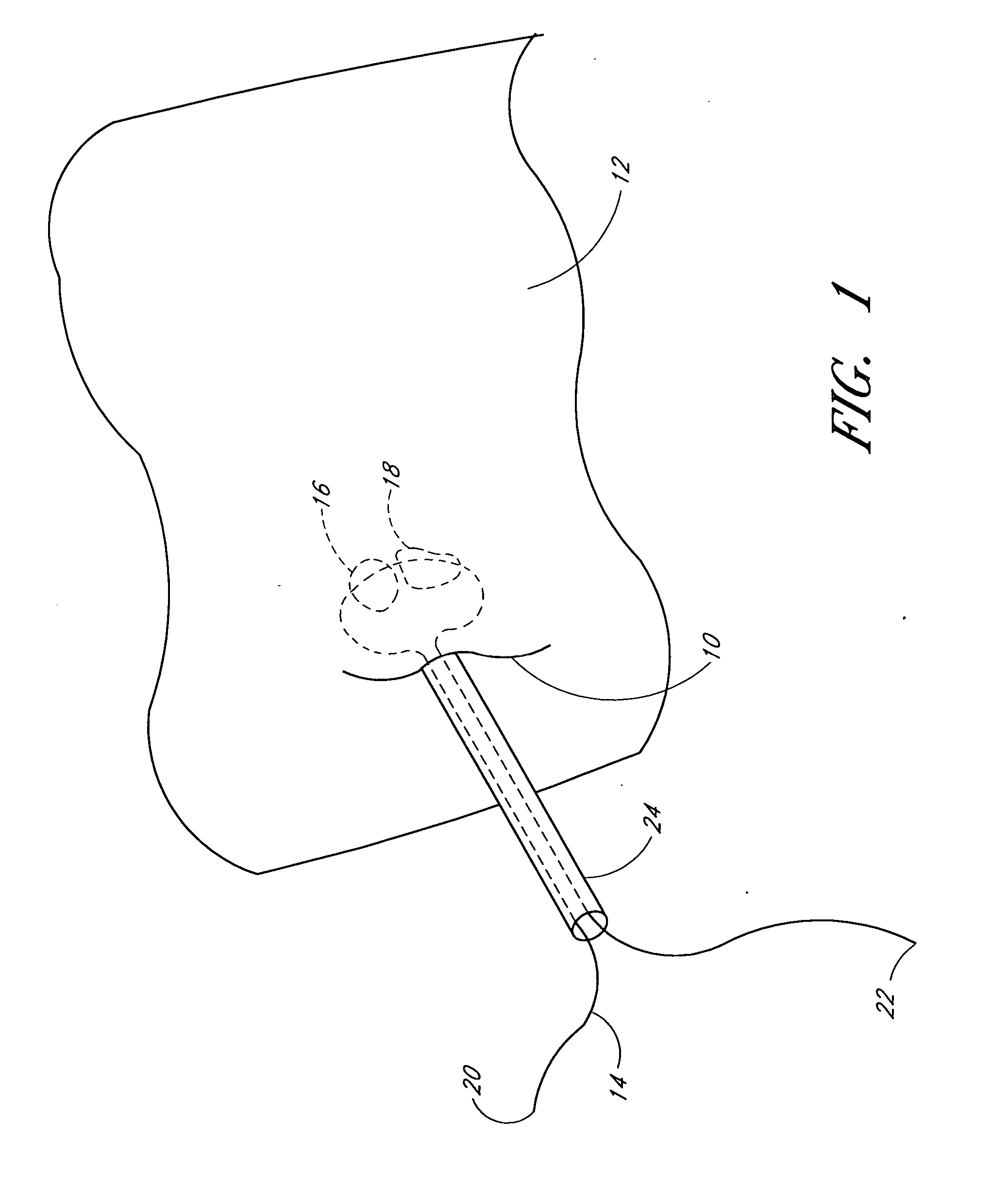Method and apparatus for holding suture ends to facilitate tying of knots
a technology for tying knots and sutures, which is applied in the field of sutures for closing incisions, can solve the problems of increasing the time it takes for surgeons to tie knots, and sutures are often difficult to handl
- Summary
- Abstract
- Description
- Claims
- Application Information
AI Technical Summary
Benefits of technology
Problems solved by technology
Method used
Image
Examples
first embodiment
[0034]FIGS. 2A and 2B illustrate a knot-tying assist device 100. The device 100 includes a first receiving arm 102 and a second receiving arm 104, extending away from each other in a generally V shape. At the outermost ends of the arms 102 and 104, the arms include receiving portions 106 and 108 adapted to hold portions of the suture 14. These receiving portions as illustrated are generally U-shaped indentations, defining fingers 110, 112 and 114, 116 on each side of the arms 102 and 104, respectively. At the base 118 of each of the arms 102 and 104, semi-circular engagement portions 120 and 122 are provided, adapted to surround an introducer such as described above. The engagement portions 120 and 122 may have a roughened surface, and in one embodiment, may have ridges 124 to help hold the base against the introducer.
[0035] Extending horizontally from each of the semi-circular engagement portions 120 and 122 are bars 126 and 128, which are joined at a pivot point 130. The pivot may...
second embodiment
[0038]FIG. 3A illustrates a knot-tying assist device 200 that includes a resilient block 202 and a post 204. The resilient block as illustrated is a rectangular block having an upper surface 206 and a lower surface 208, a front edge 210 and a back edge 212, and side edges 214 and 216. The block has a first slit 218 and a second slit 220 extending into the block from the front edge 210 which are adapted to receive a portion of a suture therein. The slits may extend into the block and may be substantially parallel to each other and to the side edges. At the outer or forward end of each slit, there may be V-shaped notches 222 and 224 to facilitate insertion of a suture portion into the slit. The resilient block may be made of any suitable material, preferably an elastomeric material, for example silicone or rubber, that allows opposite sides of the slit to be separated in order to insert suture portions into the slits. The material is sufficiently elastic to close the slit in order to ...
PUM
 Login to View More
Login to View More Abstract
Description
Claims
Application Information
 Login to View More
Login to View More - R&D
- Intellectual Property
- Life Sciences
- Materials
- Tech Scout
- Unparalleled Data Quality
- Higher Quality Content
- 60% Fewer Hallucinations
Browse by: Latest US Patents, China's latest patents, Technical Efficacy Thesaurus, Application Domain, Technology Topic, Popular Technical Reports.
© 2025 PatSnap. All rights reserved.Legal|Privacy policy|Modern Slavery Act Transparency Statement|Sitemap|About US| Contact US: help@patsnap.com



